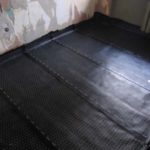Technology of calking joints between the window frame and walls. A few tips on how to caulk windows using different supplies and sealants. Types of sealants.
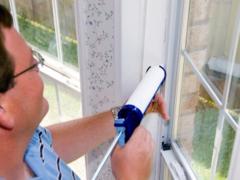 Windows must isolate the room from the outside, so you need to create a vacuum between the profile and window openings. To prevent occurrence of draft in winter, it is necessary to ensure the tightness of the window joints. Caulking will last for a long time if you find out how to caulk windows correctly.
Windows must isolate the room from the outside, so you need to create a vacuum between the profile and window openings. To prevent occurrence of draft in winter, it is necessary to ensure the tightness of the window joints. Caulking will last for a long time if you find out how to caulk windows correctly.
Start with cleaning the treated surface, because the connected areas must be clean (in the case of applying silicone, polysulfide, acrylic or butyl they should also be dry), free from dust and grease. Metal surface after the stripping is processed with an acetone based solvent.
For filling the seams, you can use an elastic cord made of closed-cell polyethylene foam. Since adhesion to most seals is minimal, there won’t be any sticking to the wall, and closed pores will prevent the ingress of moisture. For the small joints where the application of a cord is impossible, polyethylene strip should be applied. To prevent contamination of the walls and windows use the sealing tape of paper with the adhesive surface.
I you’re not sure how to caulk a window using acrylic sealants, we recommend priming the seam. In such cases, the adhesion of the 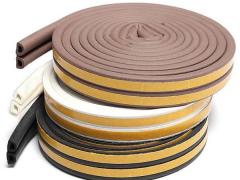 sealant to the building material is insufficient, and the primer will help get rid of it.
sealant to the building material is insufficient, and the primer will help get rid of it.
The minimum width of the joint must be 6 mm, if more, you should keep the proportion of width and depth of the seam equal to 2:1. The surplus is removed from the non-porous surfaces before hardening, while from the porous surfaces – after hardening. You can remove it by any possible mechanical way.
To caulk windows outside use compressed sealing tape, which has excellent moisture resistance. This tape is attached to the plastic window or a wall in a deformed state. Further, the tape extends and fills the gaps and cracks. Installing vinyl windows using compressed seals can be possible only in new houses.
Types of sealants
The most common type of sealants used when installing the windows and finishing linings is silicone sealants. There are several types differing in composition and additives used.
Silicone rubber mass has a high plasticity after solidification, it easily stands temperature and can be used in a wide range of applications, from handling the details of joints and profiles to sealing construction joints.
Silicone sealant is widely used to caulk windows inside, i.e., for sealing joints between the window frame and the plastic linings, for caulking the joint between the window frame and sill (Read: How to replace a window sill). For exterior applications it is used for sealing the joints of the window frame as well as for sealing construction joints, which is not quite correct, since the silicone sealant does not pass vapor and does not meet the requirements for windows installation.
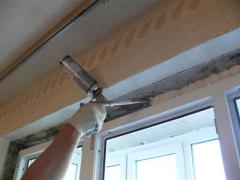 Acrylic sealants. A typical use of acrylic sealants and mastics is for external sealing of construction joints. Due to the ability of the mastic to pass air through the insulation layer and at the same time perfectly isolate it from precipitation, polyacrylate based sealants for exterior joints perfectly suit for protection of the polyurethane foam.
Acrylic sealants. A typical use of acrylic sealants and mastics is for external sealing of construction joints. Due to the ability of the mastic to pass air through the insulation layer and at the same time perfectly isolate it from precipitation, polyacrylate based sealants for exterior joints perfectly suit for protection of the polyurethane foam.
Polymer adhesives and PVC based sealants have high viscosity and adhesion to PVC surfaces forming a single structure after bonding. They are used for repairing PVC surfaces, bonding and caulking. They’re perfect to caulk windows inside: for treatment of joints and cracks between the linings, the window frame and the window sill in the absence of static and dynamic tensile loads influencing the glued surfaces.
Polyurethane sealants are also used for caulking windows; they have a high adhesive strength of virtually all materials: glass, wood, plastic, concrete.
How to re caulk interior and exterior joints
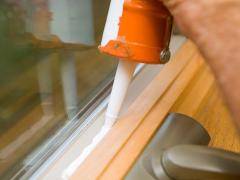 Strip off old caulk and old loose glazing. Use a special caulk softener in order to remove the old caulking. Cover the joints with it in advance to let it soak in. Properly remove the old caulking as well as possible for better adherence of the new seal.
Strip off old caulk and old loose glazing. Use a special caulk softener in order to remove the old caulking. Cover the joints with it in advance to let it soak in. Properly remove the old caulking as well as possible for better adherence of the new seal.
Caulk around windows. If you’ve noticed a draft around windows, go outside and have a look at the existing caulking. If there isn’t any, you will need to caulk around windows. The older caulking is to be totally stripped off. Here are things you ought to remember.
Do not perform the caulking in wet weather; moisture won’t let the caulking to adhere to the frame properly. It is not recommended to caulk in frosty weather.
Clean the areas where you are going to apply the caulking. Remove dirt, dust, old caulking along with any flaking paint.
Do not cut too large hole in the tube end, otherwise too much caulking will come out.
Carry out caulking starting from the top. Keep to a permanent speed of moving the tube along the seam.
 The top window seam must have a good bead of caulking as it will be exposed to water and precipitation for long. Do not seal drain holes at the bottom of the window: they are located there by design.
The top window seam must have a good bead of caulking as it will be exposed to water and precipitation for long. Do not seal drain holes at the bottom of the window: they are located there by design.
It’s not advisable to fill large holes with caulking. It’s not efficient as the caulking dries and shrinks. In the case of oversized holes you can use rope or other cord.
Use only interior caulking when processing joints inside. Exterior caulking can emit gas and bad smell.
Wipe the caulking tube regularly as it gets dirty on the end or sometimes comes out too much.
When you got full information on how to calk windows, opt to caulking material according to given recommendations and get to work.


